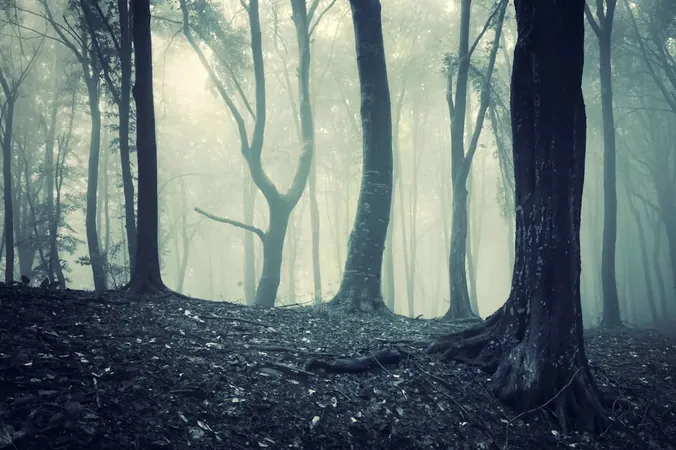
Forest Discovery Raises Alarm: Microplastics Found in Unexpected Places!
2025-09-18
Author: Yu
A Hidden Threat in Our Forests!
Microplastics, tiny particles from our daily lives, have infiltrated every corner of the globe—from oceans to cities. But now, scientists have made a shocking discovery: microplastics are accumulating densely in forests, raising serious concerns about the health of these vital ecosystems.
Groundbreaking Research Unveils New Findings
A team of geoscientists at the Technical University of Darmstadt conducted a pioneering study, marking the first conclusive evidence of microplastic accumulation in forest ecosystems. Their significant findings were featured in the prestigious journal, Nature: Communications Earth & Environment, highlighting the alarming link between atmospheric microplastics and their entrainment in forest soils.
How Do Microplastics Get There?
According to lead researcher Dr. Collin J. Weber, microplastics initially settle on tree leaves—a process he describes as the 'comb-out effect.' Later, rainfall or decomposing leaves transfer these particles to the forest floor. The research team detected microplastics not just in the upper soil layers but also deep below, suggesting that both falling leaves and soil organisms contribute to this hidden crisis.
Why Should We Be Worried?
The pervasive nature of microplastics poses a significant threat, both to humans and natural ecosystems. Dr. Weber emphasized that the discovery of high concentrations in forest soils indicates a broad, diffuse source of pollution from the air, rather than local agricultural runoff. This finding echoes similar discoveries in the ocean, where microplastics are becoming increasingly common.
The health implications are staggering. Research from Harvard University links microplastics to a range of serious health concerns, including reproductive problems, cell and DNA damage, increased cancer risks, and respiratory issues. This doesn’t just affect humans; studies show health risks extend to various animal species, signaling an urgent environmental crisis.
Forests Under Siege
Forests, already vulnerable due to climate change, now face the additional threat of microplastics tainting their ecosystems. Dr. Weber’s findings suggest a perilous future for forest health, indicating that action is needed now more than ever.
What’s Being Done to Combat Microplastic Pollution?
The battle against microplastics is twofold: we must not only remove existing pollutants but also stop new plastics from entering ecosystems. Innovative solutions are on the rise. Researchers are developing advanced water filters that can capture microplastics from drinking water, while new biodegradable cleaning pellets are designed to collect ocean plastics efficiently.
Moreover, eco-conscious brands are shifting towards sustainable materials, using alternatives like seaweed and rice husks for packaging, which can significantly reduce plastic waste.
What Can You Do?
As consumers, we can make a difference! By choosing products that prioritize sustainability and avoiding single-use plastics, we contribute to a cleaner environment. Together, we can tackle the microplastic crisis head-on, protecting our forests and ourselves.


 Brasil (PT)
Brasil (PT)
 Canada (EN)
Canada (EN)
 Chile (ES)
Chile (ES)
 Česko (CS)
Česko (CS)
 대한민국 (KO)
대한민국 (KO)
 España (ES)
España (ES)
 France (FR)
France (FR)
 Hong Kong (EN)
Hong Kong (EN)
 Italia (IT)
Italia (IT)
 日本 (JA)
日本 (JA)
 Magyarország (HU)
Magyarország (HU)
 Norge (NO)
Norge (NO)
 Polska (PL)
Polska (PL)
 Schweiz (DE)
Schweiz (DE)
 Singapore (EN)
Singapore (EN)
 Sverige (SV)
Sverige (SV)
 Suomi (FI)
Suomi (FI)
 Türkiye (TR)
Türkiye (TR)
 الإمارات العربية المتحدة (AR)
الإمارات العربية المتحدة (AR)